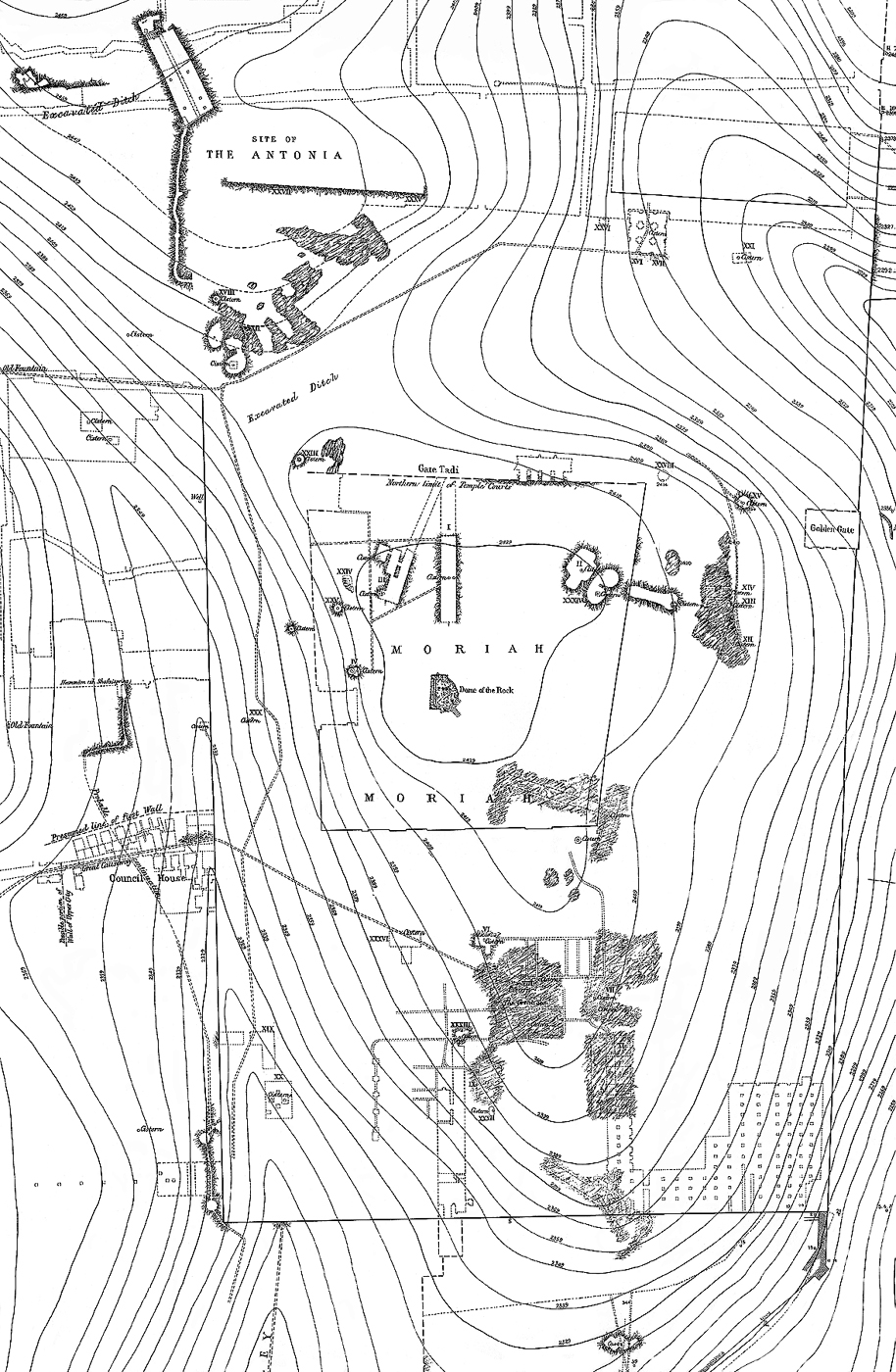Image Details

Palestine Exploration Fund, courtesy of curator Felicity Cobbing
A step up in historical accuracy. Warren’s explorations in—and under—Jerusalem marked the beginning of the systematic study of the ancient city. His topographic plan of the Temple Mount , which noted important surface features and underground cisterns, is consulted by archaeologists and historians to this day. One of Warren’s insights into the Temple Mount concerns the spring of an arch near the southwest corner of the Mount’s retaining wall. Many excavators long assumed that the arch, known as Robinson’s Arch, was part of a bridge leading to the Temple Mount. As the drawing made by Warren in 1867 shows, he believed it was part of a stairway—a view subsequently widely rejected and then confirmed more than a hundred years later.
